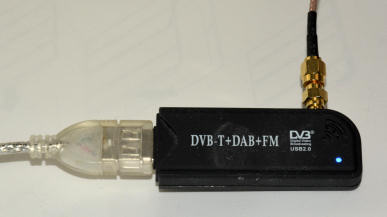

- #PLANEPLOTTER MLAT RECEIVER FULL#
- #PLANEPLOTTER MLAT RECEIVER SOFTWARE#
- #PLANEPLOTTER MLAT RECEIVER PLUS#
Some plane tracking software allows type 2 aircraft to be located by triangulating their position from 3 or more different receivers. So very few Military aircraft show up on that. Most plane tracking software only allows you to receive type 1 aircraft - the ones that transmit their location. B1's B2's and B52 fall into this category, as do QRA aircraft on a real "shout". They may transmit their Squawk and altitude though. These aircraft either transmit nothing (or it's usually turned off). Most military aircraft fall into this category.ģ) No Mode S. These aircraft transmit identity, altutude, callsign and squawk, but do NOT transmit their position. These are mostly civilian - few military aircraft broadcast all that.Ģ) Partial Mode S.
#PLANEPLOTTER MLAT RECEIVER PLUS#
These aircraft transmit their identity, position, altitude, callsign and squawk plus some other stuff.
#PLANEPLOTTER MLAT RECEIVER FULL#
There are 3 basic types of transmission from the aircraft.ġ) Full Mode S. What is the difference with data received via PP and sites such as Flightradar24 One thing that is not made very clear, will this software only work with its dedicated receiver or can I download data from the internet - I've seen references to mlat but not sure what this means.

Recruiting other people in your general area to host new PiAware or FlightFeeder sites is the best way to grow the availability ofĪs of Tuesday, March 15, 2022, 24,959 receivers are connected and capable of producing MLAT data ( view more receiver stats).Paulgul wrote:First I should say I'm completely new to this radar tracking "thing", I've seen references on this forum with users tracking aircraft using PP and I've looked on their web site regarding the software. For optimal coverage, receivers should be 10-150 km apart and in a triangular, square, or circular pattern - not in a straight line likeĪlong a road. Deploying more receivers in an area will directly improve the abilityįor FlightAware to generate MLAT positions. Improving Availability of MLAT flight tracksīoth PiAware (v2.0 and above) and FlightFeeder (v7.0 and above) ground stations can currently participate in MLAT. Upstream bandwidth while actively contributing to MLAT flight tracking. An MLAT-enabled feeder will use approximately 50 Kbps of The server requests sufficient Mode S data from the receiver to sync the time and multilaterate the position of the aircraft. When a particular aircraft is being received from four or more receivers, MLAT-enabled receivers keep the FlightAware server up to date on which Mode S aircraft are being received. FlightAwareĬurrently emits up to six MLAT positions per minute per aircraft on the web site. MLAT positions are effectively real-time, although calculation delays and processing latency is generally 4-6 seconds. (Technically, multilateration can be accomplished with only three receivers but for improved accuracy and reliability FlightAware requires four.) Using MLAT, FlightAware can take the aircraft's transponder-provided identificationĪnd altitude, then determine the latitude/longitude, and provide real-time flight tracking.īecause an aircraft must be within line-of-sight of four or more FlightAware receivers, MLAT is only available inside a subset of our ADS-B coverage footprint.

To determine the aircraft's location by using time difference of arrival (TDOA) whenĪn aircraft is detected across four or more receivers/ground stations. Aircraft without ADS-B transponders do not broadcast their latitude/longitude, so FlightAware uses multilateration of 1090 MHz Mode S


 0 kommentar(er)
0 kommentar(er)
